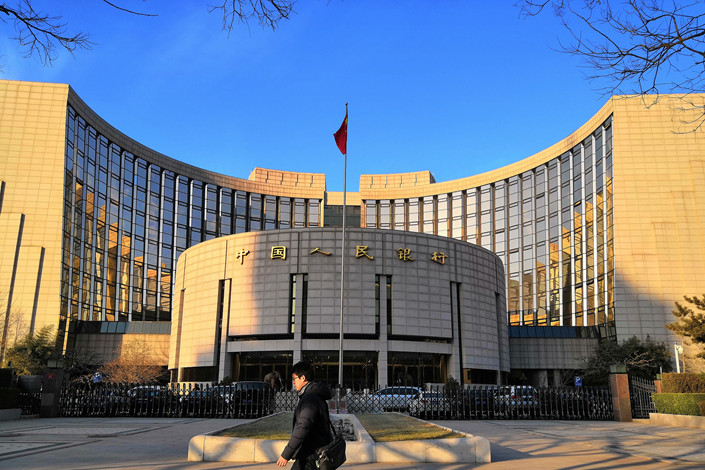China Beefs Up Liquidity Support for Small Banks

China’s central bank will hand out 300 billion yuan ($43.4 billion) in rediscount and standing lending facility (SLF) quotas to support lending by smaller banks, the bank said Friday. It was part of a series of moves to ease liquidity concerns on the interbank market and calm market jitters.
The People’s Bank of China (PBOC) will increase the rediscount quota by 200 billion yuan and the SLF quota by 100 billion yuan, it said. The central bank will also accept interbank certificates of deposit (CDs) and bank bills as collateral from small and medium-sized banks for liquidity support, it said in a statement on its website.
The moves are intended to provide support specifically targeting small and medium-sized banks and restore market confidence, analysts said. Concerns over potential risks related to smaller banks have mounted since regulators took control of Baoshang Bank last month for a year, citing “severe credit risk” posed by the small Inner Mongolia bank.
As economic growth slows amid a protracted trade war with the Trump administration in Washington, China’s central bank has been pouring more liquidity into the financial system through the use of reverse repos, the medium-term lending facility and targeted medium-term lending facility, which help smooth out fluctuations in the market.
On Friday, the central bank pumped 100 billion yuan into the financial system through operations with 28-day reverse repos at an interest rate of 2.85% in an effort to maintain stable liquidity in the middle of the year when many small banks come under stress.
Although the central bank has said the Baoshang takeover was an isolated case, the move cast a chill over the interbank market for banks to borrow from each other, especially for smaller lenders bolstering liquidity.
Overall market liquidity has remained ample recently, but small and medium-sized banks are under pressure, said Li Qilin, chief economist of Lianxu Securities. Li said the central bank’s move is aimed at addressing the structural issue.
“The latest measure will help stabilize and restore market confidence,” said Wang Yifeng, chief banking analyst at Everbright Securities. “It sends signals that the central bank will not allow liquidity crisis and risk sentiment to spread.”
The interbank CD market for popular short-term debt instruments used by smaller lenders has remained sluggish since the Baoshang takeover. Actual issuance of CDs declined to less than half of the issuers’ planned borrowing in the few days after the takeover on May 24. Issuance has since recovered to about 60% of planned volume but is still significantly lower than the 85% rate before the takeover, data from China International Capital Corp. (CICC) showed.
To support small bank borrowing, the central bank earlier this week provided backing to CD issuance by Bank of Jinzhou, a small bank based in China’s northeastern Liaoning province, offering guarantees through a financing support tool called a Credit Risk Mitigation Warrant (CRMW).
Compared with tools like the medium term lending facility, the shorter-term SLF and rediscount quotas are more targeted tools and will steer funds to banks in need, Everbright’s Wang said. Banks must apply to the central bank to tap the quota.
The expanded collateral options will also help smaller banks reduce credit risks, said Gao Ruiding, chief analyst at Guotai Junan Securities.
The central bank set up the SLF in 2013, but the lending tool has been used only on a small scale, partly because of a lack of qualified collateral for small banks as well as their concern that applying for lending support might send unfavorable signals about their liquidity to the market, analysts said.
China reported increases in total social financing and bank lending in May, but demand for business credit remained sluggish and suggested the need for further policy easing, analysts said.
Major economic data released Friday also underscored the worrisome signs, with growth in industrial output slowing to a 17-year low and a further slowdown in both property and fixed-asset investment.
Contact reporter Han Wei (weihan@caixin.com)

- MOST POPULAR







